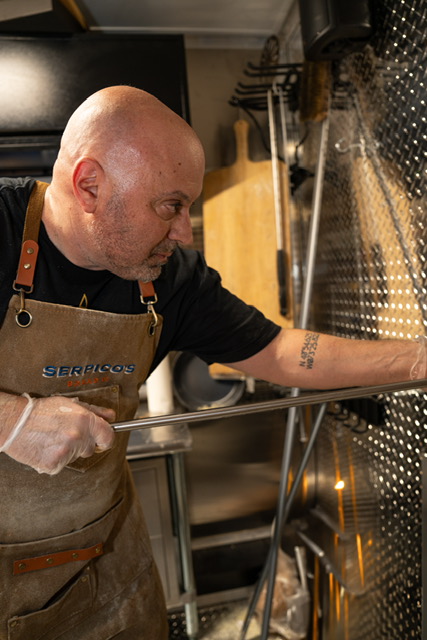Situated in the heart of the flat, open, wind-swept Hempstead Plains—a prairie that dominated the western Long Island landscape between the upland forests of the North Shore and the swampy woodlands that fringed the salt marches of the Great South Bay—Levittown has been something of an extraordinary canvas whereupon an all-too-forgotten history has been painted.
These lands were acquired in the 17th century through a series of settlement-rights and treaties between Quaker and Puritan English colonists and local Algonquin Indian tribes. One of these, John Seaman’s Jerusalem Purchase of Feb. 12, 1664, included present-day southeastern Levittown, Wantagh and Seaford and the area thereafter informally became known as “Jerusalem.” To the north grew an ancient grove of pine trees where Hempstead Turnpike and Jerusalem Avenue now intersect, resembling an isle of trees, endowed northern Levittown with the name “Island Trees.” Both of these informal place-names were employed until Jan. 1, 1948, when “Levittown” was officially adopted, although the latter
would persist as one of our school districts.
The arrival of the LIRR to Hicksville on March 1, 1837, under the supervision of Valentine Hicks, led to a massive influx of German and Irish farmers, merchants and artisans. In the years leading up to the Civil War, many of these families began pressing southwards to establish dairy, potato and cucumber farms along Wantagh and Jerusalem avenues, Hicksville and Newbridge roads and Hempstead Turnpike. New roads such as Farmedge, Bloomingdale and Division Avenue appeared as agriculture expanded. This process was additionally enhanced when the now-defunct LIRR’s Stewart Line (now marked by the LIPA right-of-way north of Hempstead Turnpike) began service on May 26, 1873 with stops at Newbridge Road and Jerusalem Avenue.
The late 19th and early 20th centuries witnessed the arrival of the world-famous 1908-11 Vanderbilt Cup auto races and several rural airfields and hunting clubs that, between the two world wars, were the frequent haunt of playboy millionaires, celebrity sportsmen and barnstorming aviators. In 1936, Robert Moses’ Wantagh State Parkway reached Hempstead Turnpike and the Jerusalem/Island Trees area became increasingly accessible to the motoring public; its open spaces attractive to real estate developers.
The astonishing speed with which Levittown and its scores of winding lanes, row-upon-row of houses, recreational facilities and commercial properties appeared throughout the Truman and Eisenhower years accounts much of the 21st century perception of nondescript potato fields. However, in 1940, the future Levittown was a complex and diverse landscape: potato fields, dairy farms, a hog farm, a peach orchid, two school houses, a gardening center, a dog kennel and the aforementioned infrastructure to accommodate planes, trains and automobiles all determined the settlement patterns whereupon Levitt & Sons would be compelled to operate after WWII.
The future Levittown, too, had yet another feature working to its advantage. In the 1930s, the aviation industry appeared on the scene with such massive facilities as Grumman, Republic and Sperry’s in adjacent communities, creating the industrial grounding and employment base that would make suburban homeownership sustainable well into the 1980s, by which time nearly one-in-three American families lived in the suburbs.
As extensive and as diverse as the economy was around and about the Jerusalem/Island Trees area and environs in the early 40s, the true explosive population growth, commercial expansion and real estate development began after 1947 when Levitt & Sons created the largest suburban housing development in history with 17,447 mass-produced homes, roads, landscaping, parks, pools, bowling lanes and community facilities. In the next three decades, as America enjoyed its role as the world’s greatest manufacturer and the middle class burgeoned, Levitt & Sons went on to establish communities in four U.S. states and seven foreign countries. By 1990, more than one million people throughout the globe could claim to live or have lived in the 140,000 homes erected by the company or its subsidiaries; millions more in municipalities utilizing the mass-production, marketing and civil engineering techniques first revolutionized here on Long Island.
Perhaps, though, Levittown is most famous because it epitomized the concept of the “American Dream,” as an opportunity for working families: an opportunity for good schools, good neighbors and a close-knit community so inextricably connected to the name of one visionary genius. In the 1950s and ‘60s, a blue collar worker with an eighth grade education, wife and Baby Boom family could acquire his own ranch or Cape Cod—an opportunity that would have been a mere pipe dream 20 years earlier amid the soup kitchens, unemployment lines, rent strikes, sidewalk evictions and Hoovervilles of the Great Depression. The first 6,000 units, ready by Oct. 1, 1947, were Cape Cods constructed at an average rate of 18 per day; all rentals for low income GI’s earning about 10 percent less than the average Nassau resident, but costing about 30 percent less than the average brand-new home in America at that time. They would be joined by 11,447 ranch homes with Bendix washers, GE stoves and refrigerators, radiant heating and fireplaces. By the time the Housing and Rent Act and its FHA-guarantees came along, the cost of a home’s value came into force, and Levitt & Sons switched from rentals to sales.
Today, the volunteers of the Levittown Historical Society & Museum work diligently to preserve this extraordinary history and pass it on to posterity, dedicating themselves to the dissemination of historical literacy and enhancement of knowledge in the social sciences; a great labor-of-love implemented with our open-to-the-public museum in the Levittown Memorial Education Center, our hosting of educational forums in the community and our participation in community events.
Paul Manton is the president of the Levittown Historical Society & Museum. Contact him at 516-
434-7140 or levhisgtoricalsoc@aol.com.

































